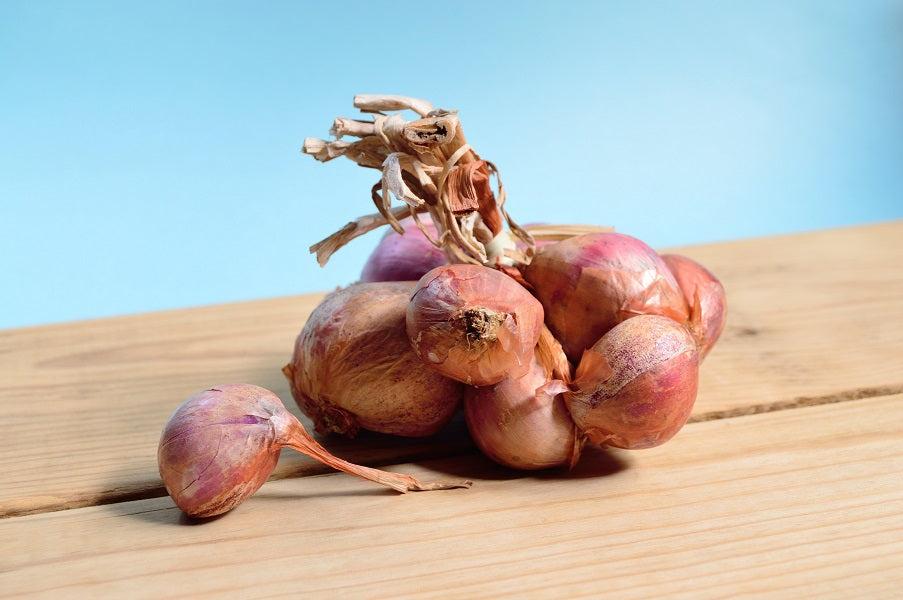Your Cart is Empty
Pink Root Disease (Phoma terrestris) is a major issue in onion farming, as it has the potential to cause widespread devastation. This soil-borne fungus can be found in virtually every part of the world, and can penetrate as deep as 45cm into the soil.
Although onions are the primary target of Pink Root Disease, it has been known to affect other crops, such as cereals, corn, cucurbits, peppers, spinach, and soybeans, in rare instances.
Several environmental factors can exacerbate the severity of the disease, including droughts, cold temperatures, imbalanced nutrients and toxicities, and the presence of insects and other diseases. To minimize the impact of Pink Root, it is important to take these stressors into consideration when managing onion crops.

The Phoma terrestris fungus is a common soil inhabitant that can penetrate the roots of onion plants directly, making weaker plants more susceptible to infection. The symptoms of infection typically appear 7-21 days after initial exposure. The fungus can persist in soil for extended periods, feeding on plant debris and remaining active at temperatures between 75-85ºF.
Pink Root Disease is most severe in fields with heavy, poorly-drained soils, and the risk of infection increases with each consecutive season of onion cultivation in a given field. The pathogen can spread to unaffected areas via irrigation water and is more likely to cause damage to plants than less virulent strains of the fungus.
Infected plants may also be vulnerable to secondary infections by other pathogens, such as Alternaria porri, the causal agent of purple blotch. The greatest yield losses occur when plants are infected early in the growing season, resulting in a compromised root system that cannot effectively absorb water during hot temperatures.
Small, stunted plants (above ground)
Dying back of leaves
Similar symptoms to drought or nutrient deficiencies (above ground)
Pink-colored roots (below ground)
Roots that turn dark red or purple and start to dry up
Root death
Reduced bulb size

It is important to note that the above-ground symptoms can resemble those of drought or nutrient deficiencies, so it is essential to carefully inspect the roots for the distinctive pink coloration to accurately diagnose Pink Root Disease.
The most effective way to manage Pink Root Disease caused by Phoma terrestris is by planting resistant onion varieties. There are various varieties available, but their level of resistance may vary depending on the genetic variability of the pathogen in a given field. It is recommended to consult with a local seed provider to determine which varieties may perform best in your area.
In addition to using resistant varieties, it is important to maintain healthy plants through optimal fertility practices, disease and insect pest control, and avoiding consecutive onion crops. Although crop rotation has no effect on the disease, planting onions every five years can help keep the incidence of Pink Root Disease low. The incidence of the disease increases with each consecutive onion crop, as well as when onions are planted after cereal crops.
Soil fumigation with metam sodium or chloropicrin can also be used to control some strains of the fungus, although this method could not be of preference. It is important to consider all management options and weigh their costs and benefits before making a decision.
Resistant varieties: Using onion varieties that are resistant to Phoma terrestris can help control the spread of the fungus
Crop rotation: Planting onions in a different field each year can reduce the presence of the Phoma terrestris fungus.
Cultural practices: Proper sanitation, avoiding overcrowding, and maintaining soil fertility can reduce the spread of the fungus.
Fungicide application: Fungicides such as chlorothalonil, mancozeb, or copper hydroxide can be used to control Phoma terrestris.
"It's important to follow the instructions on the fungicide label and to consult with the manufacturer representative or a local agricultural extension agent for proper handling and application of the fungicide, especially for edible crops."
Biological control: The utilization of beneficial microorganisms, such as Trichoderma - saprophytic fungi, can be beneficial.

Comments will be approved before showing up.
